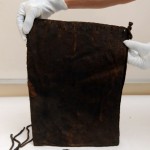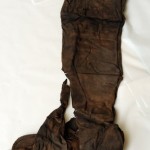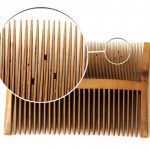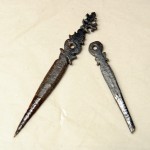The Mary Rose was Henry VIII’s favorite ship. It was the first ship that could fire a full cannon broadside and although it’s small by today’s standards at 126 feet (38.5 meters) in length, it was the largest ship in the Tudor fleet.
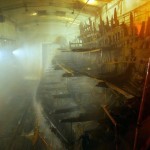 It sank off the coast of Plymouth in July 1545 before Henry’s very eyes. Nobody knows exactly why, although of course everyone’s got a theory. Five hundred hands went down with her, along with a huge amount of treasure and every day Tudoriana. Only 35 men survived, the ones in the rigging above the deck when the ship went down.
It sank off the coast of Plymouth in July 1545 before Henry’s very eyes. Nobody knows exactly why, although of course everyone’s got a theory. Five hundred hands went down with her, along with a huge amount of treasure and every day Tudoriana. Only 35 men survived, the ones in the rigging above the deck when the ship went down.
The wreck was pulled out of the ocean in 1982, and since then has been on display upright in a dry dock at very low temperature and very high humidity of 95% in the Mary Rose Ship Hall in the Portsmouth Historic Dockyard.
Until September 20th you could go see it, but the hall is closed now as they begin to build a new $55 million museum that will suit the particular needs of the wreck and its 19,000 artifacts.
The museum will reflect the original ship’s structure with Nelson’s HMS Victory, docked alongside.
It [the Mary Rose] will continue to be sprayed with preserving polyethylene glycol – a water-based wax solution – until 2011 and then it will be carefully “baked dry” into 2012, when the new museum is due to open in time for the Olympics.
The Mary Rose will be on display in the new museum protected behind glass barriers while the conservation work is completed. The glass is set to be removed in 2016.
The 19,000 artifacts have been in temperature-controlled storage, mainly, with only a few displayed at various times. As part of a fundraising push to get the last $6 million needed for the museum, the Mary Rose Trust has allowed more artifacts than ever before to be filmed.
And what an amazing grouping it is. It includes everyday items like 70 nit combs, some with dead nits still in them, the oldest known fiddle, beer tankards, shoes, boots, stylish manpurses, manicure sets, and this seriously scary metal syringe sailors used for injecting mercury into their urethrae as a cure for syphilis.
Mercury! Injected into your peehole! Spyhilis must have been truly heinous for people to embrace such a cure. Here’s the syringe in question accompanied by two packets of field bandages:
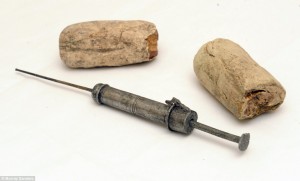
It’s remarkable how many easily perishable items like those bandages were found on the wreck. Here are some Tudor sailor accessories:
Here are some personal grooming effects:
Then there’s the tankard in which a sailor would receive his daily ration of beer, which may sound a little weird to us today, but the beer was likely weak enough not to dehydrate and was certainly less teeming with pathogens than any water they could have carried on board.
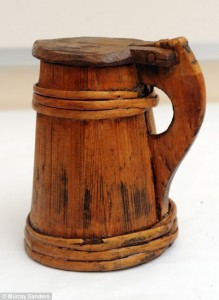
To find out how you can help preserve this incredible slice of Tudor life in a proper museum deserving of its awesomeness, see the Mary Rose Trust website.
They’ve got a neat initiative asking for 500 individuals, schools, businesses and organisations to become the Mary Rose’s “new crew”. Each crew member pledges to raise £500 (ca. $790) towards a £250,000 goal, all of which goes to the new museum.
